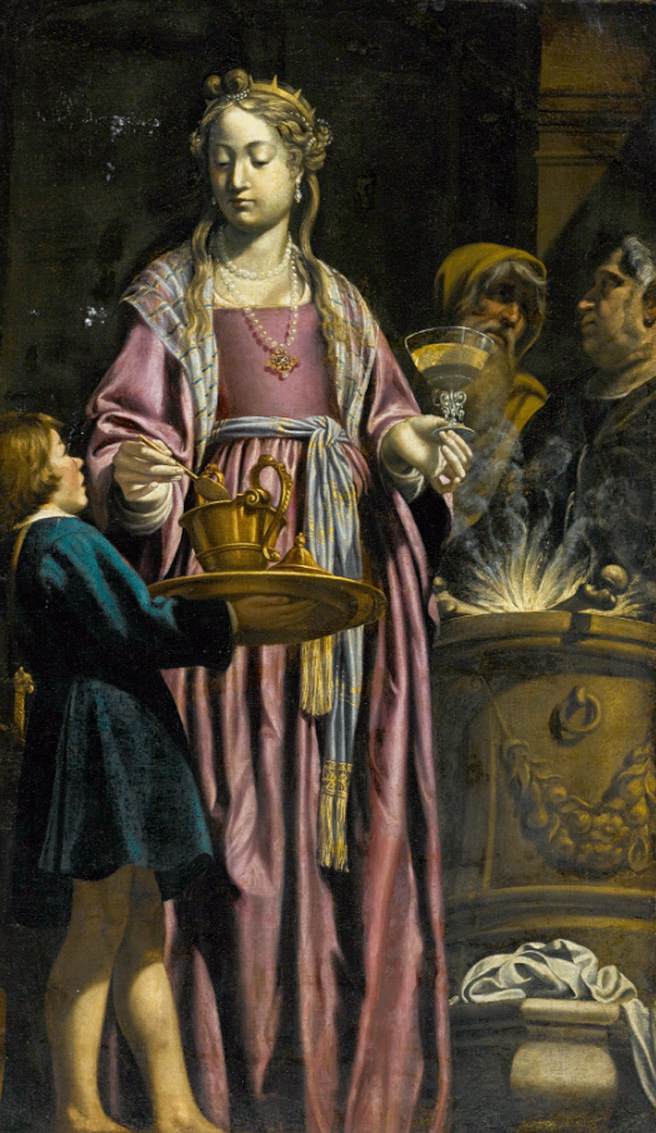Description
The painting "Artemisia Drinking Wine Mixed with the Ashes of her Husband, Mausolus" by artist Filippo Tarchiani is a fascinating work that captivates the viewer with its unique artistic style, carefully designed composition, and use of color.
Tarchiani's artistic style in this work is characterized by his detailed realism and his focus on minute details. Each brush stroke is meticulously executed, creating a sense of depth and texture in the painting. In addition, the artist uses a rich and vibrant color palette, which contributes to the dramatic and emotional atmosphere of the work.
The composition of the painting is remarkably balanced and symmetrical. At the center of the work is Artemisia, Queen of Caria, holding a cup of wine mixed with the ashes of her late husband, Mausolus. Her figure stands out against a dark background, emphasizing her presence and her pain. Around it are symbolic objects such as a laurel wreath and a funerary urn, which reinforce the theme of death and mourning.
The use of color in painting is particularly interesting. Tarchiani uses dark and gloomy tones in the background to create a melancholic and sad atmosphere. However, the deep red of the wine glass contrasts with the rest of the palette, highlighting the importance of Artemisia's act of drinking the wine mixed with her husband's ashes. This chromatic contrast also adds a sense of vitality and passion to the work.
The story behind the painting is equally intriguing. Artemisia II of Caria was a queen who ruled in the fourth century BC after the death of her husband Mausolus. According to legend, Artemisia mixed her husband's ashes with wine and drank the mixture as an act of love and devotion. This painting captures that intimate and powerful moment, showing Artemisia's suffering and determination in her grief.
Despite its relatively small original size (140 x 84 cm), Tarchiani's painting manages to convey a great deal of emotion and tell a fascinating story. It is a work that deserves to be appreciated and studied in detail, since it reveals little-known aspects of the history and life of Artemisia and Mausolus.

